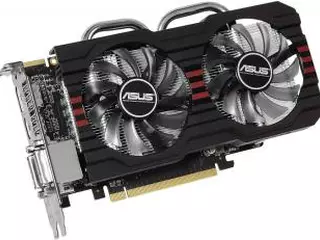Qualcomm Adreno 680 vs Radeon R7 260X
Find out if it is worth upgrading your current GPU setup by comparing Qualcomm Adreno 680 and Radeon R7 260X. Here you can take a closer look at graphics cards specs, such as core clock speed, memory type and size, display connectors, etc. The price, overall benchmark and gaming performances are usually defining factors when it comes to choosing between Qualcomm Adreno 680 and Radeon R7 260X. Make sure that the graphics card has compatible dimensions and will properly fit in your new or current computer case. Also these graphics cards may have different system power recommendations, so take that into consideration and upgrade your PSU if necessary.
Qualcomm Adreno 680 is a Laptop Graphics Card
Note: Qualcomm Adreno 680 is only used in laptop graphics. It has lower GPU clock speed compared to the desktop variant, which results in lower power consumption, but also 10-30% lower gaming performance. Check available laptop models with Qualcomm Adreno 680 here:
Main Specs
Qualcomm Adreno 680
Radeon R7 260X
Power consumption (TDP)
115 Watt
Interface
PCIe 3.0 x16
Supplementary power connectors
1 x 6-pin
Memory type
GDDR5
Maximum RAM amount
4 GB
Display Connectors
2x DVI, 1x HDMI, 1x DisplayPort
Check Price
Check Price
Qualcomm Adreno 680 is used in Laptops, and Radeon R7 260X - in Desktops.
Qualcomm Adreno 680 is manufactured by 7 nm process technology, and Radeon R7 260X - by 28 nm process technology.
Game benchmarks
Assassin's Creed Odyssey
Battlefield 5
Call of Duty: Warzone
Counter-Strike: Global Offensive
Cyberpunk 2077
Dota 2
Far Cry 5
Fortnite
Forza Horizon 4
Grand Theft Auto V
Metro Exodus
Minecraft
PLAYERUNKNOWN'S BATTLEGROUNDS
Red Dead Redemption 2
The Witcher 3: Wild Hunt
World of Tanks
high / 1080p
0−1
16−18
ultra / 1080p
−
9−10
QHD / 1440p
0−1
4−5
low / 720p
1−2
30−35
medium / 1080p
0−1
20−22
The average gaming FPS of Radeon R7 260X in Assassin's Creed Odyssey is 3100% more, than Qualcomm Adreno 680.
high / 1080p
−
24−27
ultra / 1080p
−
21−24
QHD / 1440p
0−1
8−9
4K / 2160p
−
6−7
low / 720p
0−1
50−55
medium / 1080p
−
27−30
low / 768p
50−55
45−50
high / 1080p
45−50
−
QHD / 1440p
0−1
0−1
The average gaming FPS of Qualcomm Adreno 680 in Call of Duty: Warzone is 10% more, than Radeon R7 260X.
low / 768p
60−65
210−220
medium / 768p
27−30
180−190
ultra / 1080p
7−8
100−110
QHD / 1440p
−
55−60
4K / 2160p
−
30−35
high / 768p
16−18
140−150
The average gaming FPS of Radeon R7 260X in Counter-Strike: Global Offensive is 478% more, than Qualcomm Adreno 680.
low / 768p
70−75
55−60
ultra / 1080p
0−1
40−45
medium / 1080p
45−50
45−50
The average gaming FPS of Qualcomm Adreno 680 in Cyberpunk 2077 is 15% more, than Radeon R7 260X.
low / 768p
45−50
110−120
medium / 768p
10−11
95−100
ultra / 1080p
0−1
65−70
The average gaming FPS of Radeon R7 260X in Dota 2 is 265% more, than Qualcomm Adreno 680.
high / 1080p
−
18−20
ultra / 1080p
−
16−18
QHD / 1440p
−
16−18
4K / 2160p
−
6−7
low / 720p
0−1
40−45
medium / 1080p
−
20−22
high / 1080p
−
24−27
ultra / 1080p
−
20−22
QHD / 1440p
−
16−18
low / 720p
21−24
100−110
medium / 1080p
0−1
55−60
The average gaming FPS of Radeon R7 260X in Fortnite is 377% more, than Qualcomm Adreno 680.
high / 1080p
0−1
27−30
ultra / 1080p
−
21−24
QHD / 1440p
0−1
10−11
4K / 2160p
−
10−11
low / 720p
0−1
55−60
medium / 1080p
0−1
30−33
low / 768p
18−20
85−90
medium / 768p
−
75−80
high / 1080p
0−1
30−35
ultra / 1080p
−
12−14
QHD / 1440p
0−1
3−4
medium / 720p
12−14
−
The average gaming FPS of Radeon R7 260X in Grand Theft Auto V is 357% more, than Qualcomm Adreno 680.
high / 1080p
−
10−11
ultra / 1080p
−
8−9
4K / 2160p
−
3−4
low / 720p
0−1
30−35
medium / 1080p
−
12−14
low / 768p
75−80
110−120
high / 1080p
27−30
−
medium / 1080p
−
100−110
The average gaming FPS of Radeon R7 260X in Minecraft is 49% more, than Qualcomm Adreno 680.
high / 1080p
−
21−24
ultra / 1080p
−
18−20
low / 720p
8−9
55−60
medium / 1080p
−
24−27
The average gaming FPS of Radeon R7 260X in PLAYERUNKNOWN'S BATTLEGROUNDS is 612% more, than Qualcomm Adreno 680.
high / 1080p
−
14−16
ultra / 1080p
−
10−11
QHD / 1440p
−
0−1
low / 720p
0−1
30−33
medium / 1080p
−
16−18
low / 768p
0−1
55−60
medium / 768p
−
35−40
high / 1080p
−
20−22
ultra / 1080p
−
10−12
4K / 2160p
−
8−9
low / 768p
45−50
100−110
medium / 768p
14−16
60−65
ultra / 1080p
0−1
35−40
high / 768p
12−14
55−60
The average gaming FPS of Radeon R7 260X in World of Tanks is 200% more, than Qualcomm Adreno 680.
Full Specs
Qualcomm Adreno 680
Radeon R7 260X
Architecture
GCN 2.0
Code name
Bonaire
Type
Laptop
Desktop
Release date
6 December 2018
8 October 2013
Pipelines
896
Boost Clock
1000 MHz
Transistor count
2,080 million
Manufacturing process technology
7 nm
28 nm
Texture fill rate
61.60
Floating-point performance
1,971 gflops
Length
170 mm
Memory bus width
128 Bit
Memory bandwidth
104 GB/s
Shared memory
+
DirectX
DirectX 12
Shader Model
6.3
OpenGL
4.6
OpenCL
2.0
FreeSync
+
Bus support
PCIe 3.0
HDMI
+
Bitcoin / BTC (SHA256)
225 Mh/s
Eyefinity
+
Design
reference
DDMA audio
+
Ethereum / ETH (DaggerHashimoto)
5.16 Mh/s
Check Price
Check Price

